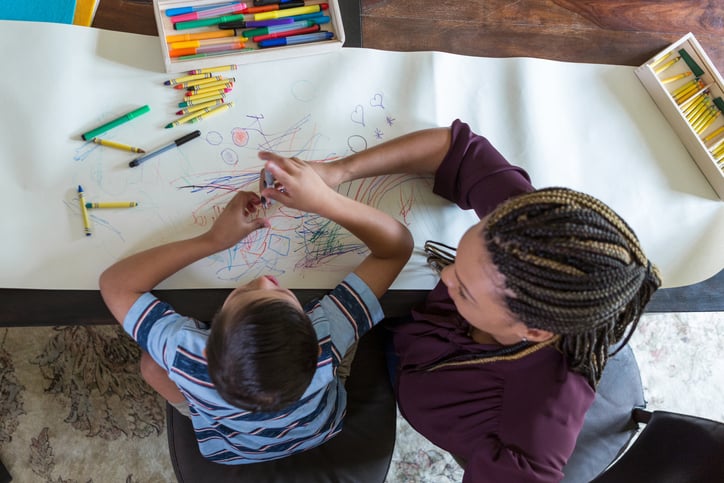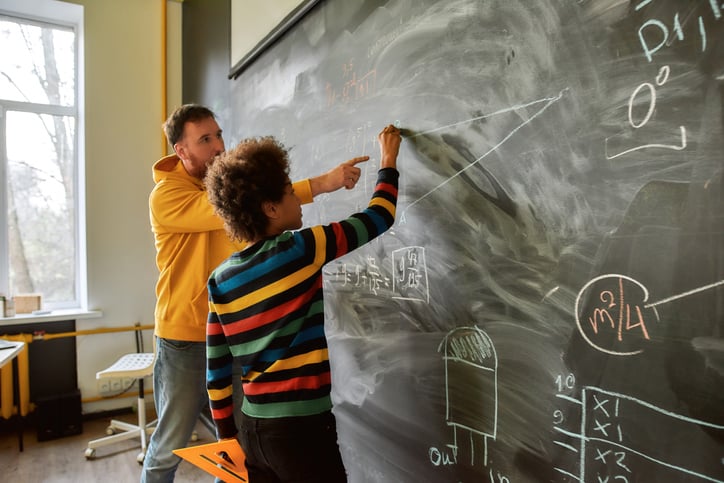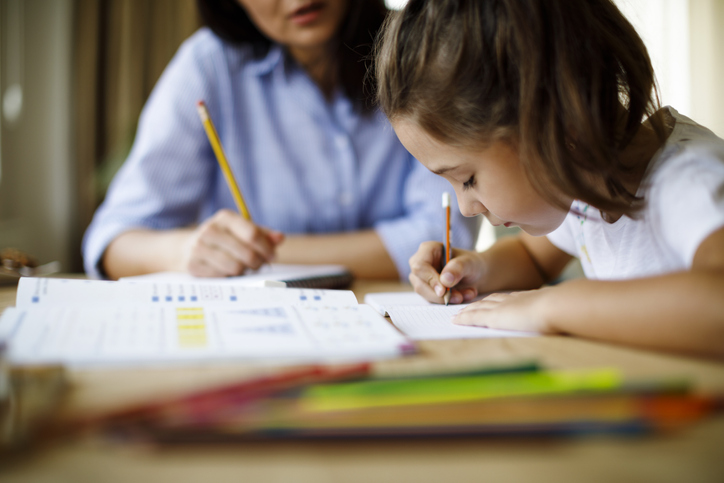I was very nervous about this first meeting in our new location with a brand-new IEP team. The only IEP meetings I ever attended were with people I knew well and who helped me every step of the way after my grandson’s autism diagnosis. I knew what I wanted for my grandson, but I had no idea how to present my thoughts to this new, large team of professionals.
To help me prepare, a friend suggested I get a copy of All About IEPs by Peter and Pamela Wright, and Sandra Webb O’Connor (Wrightslaw). This book was perfect and has been my go-to and blueprint for every IEP meeting since. It answered many questions and helped me to understand what I could expect and what should be included in my grandson’s IEP.
One of the main questions I had was, “What can I ask for in an IEP?” The short answer was that I could ask for literally anything I felt was needed, but receiving what I asked for would be a different matter. I learned quickly that there is a process in place, and what I wanted and intuitively knew my grandson needed most took a lot of time and many meetings to materialize.
From the time he was 4 years old until today at age 16, I always felt my grandson needed to be educated in the least restrictive environment (LRE) of a general education classroom for the majority of his day. Inclusive education was important to me because I wanted him to have the opportunity to model after his neurotypical peers and be exposed to “life in the real world” as early and as much as possible.

The IEP Process and What It Looks Like
However, placement is the next-to-last item in the IEP process. This is what that process looks like:
- First, there are evaluations to confirm the diagnosis and/or eligibility for special education. The data collected is used to determine present academic and functional levels. The Present Levels section of the IEP may well be the most important part of the IEP document because everything that follows is based on it.
- Using the baseline data from the evaluations and the Present Levels section, the IEP team then creates goals for students with special needs.
- Once the goals are written, the IEP team decides what accommodations, services, and interventions are needed to reach these goals.
- Finally, using present levels, goals, and the support and services needed, the IEP team decides what placement will best meet the child’s needs.
- Once the IEP is implemented, the team will monitor progress and make adjustments as necessary.

AccommodationsAn accommodation is a change that helps a student overcome or work around the disability. These changes are typically physical or environmental.
Examples of accommodations:
|
When all was said and done, when I was asked to sign the IEP document after that first 30-day IEP review, I did not feel comfortable with the way some of the goals and interventions were worded in my grandson’s IEP and accompanying Behavior Intervention Plan (BIP), nor with his placement in a self-contained classroom.
Thankfully, my friend, herself a mother of an autistic daughter and much more familiar than I was with the IEP process, had accompanied me to the meeting. She made me aware of the option that parents can sign that they were present but not yet in agreement with the proposals, and reminded me that I was a vital part of my grandson’s IEP and his best advocate.
Requesting Time to Review and Additional Meetings
Following her advice, I respectfully requested some extra time to review everything, which allowed me to take the IEP home, carefully read over it, suggest rewrites of some of the goals and interventions, request some additional accommodations, and at least some mainstream opportunities. Once they received my email, another meeting was scheduled to confirm the changes I had requested and were made in his IEP.
My grandson’s educational and functional progress has always been very important to me, and over the years I frequently requested additional meetings to make adjustments or ask for other specific accommodations and modifications—and most importantly, to review his placement.

ModificationsA modification is a change in what is being taught to or expected from a student. This change is specific to a particular type of assignment. Examples of modifications:
|
There were times that I felt my requests for certain accommodations so my grandson could learn in an inclusive setting could and should have been granted. As I wrote in my book, decisions on inclusion are almost always based on whether the child is ready to be included in a general education classroom. Of course, each child is unique, and some children do need to be in a self-contained special education classroom to meet their needs appropriately. Still, in many cases, we may have things backward.
Inclusive Placement
The Individuals with Disabilities Education Act (IDEA) says that special education is a “service for children rather than a place where such children are sent.” Keeping that concept in mind, inclusion might be recommended and become more common if, rather than asking if the child is ready for inclusion, schools and teaching staff ask themselves if we are ready to include the child.
Having worked in special education settings for many years, I am aware of the challenges teachers face when children with special needs join their often overcrowded classrooms. Sometimes they can barely meet the needs of the students they already have and they sometimes lack the training and resources to include children with autism and other disabilities. While it is often the easier solution to keep these children in separate settings, it is rarely the best for the children who have the potential to benefit and excel from being educated alongside neurotypical students.
This is why I worked hard with my grandson to meet his behavior goals and continued to request inclusive placement for him in every IEP meeting I attended until my requests were granted.
You Can Ask for Anything
You, too, can ask for anything you intuitively know your child needs, be it accommodations, modifications, an instructional aide, or a change in placement. Just remember that the IEP process takes time and that it may take more than one yearly meeting and a lot of communication back and forth before your requests are granted and recorded in your child’s IEP—that binding legal document between parents and school staff that makes sure your autistic child’s educational needs are met.
What are your IEP experiences? Please share with us in the Comments section below.
Resources:
How to Prepare for Your IEP Meeting - For Parents of Children with Autism
How to Prepare for Your IEP Meeting – For Teachers of Students with Autism
Our Autism Journey from Special Education to Mainstream Classrooms
We hope you enjoyed the information in this article. STAGES® Learning also offers free downloadable resources to support teaching and learning with autistic individuals. Start with our free Picture Noun Cards and see our collection of other downloadable resources here!







